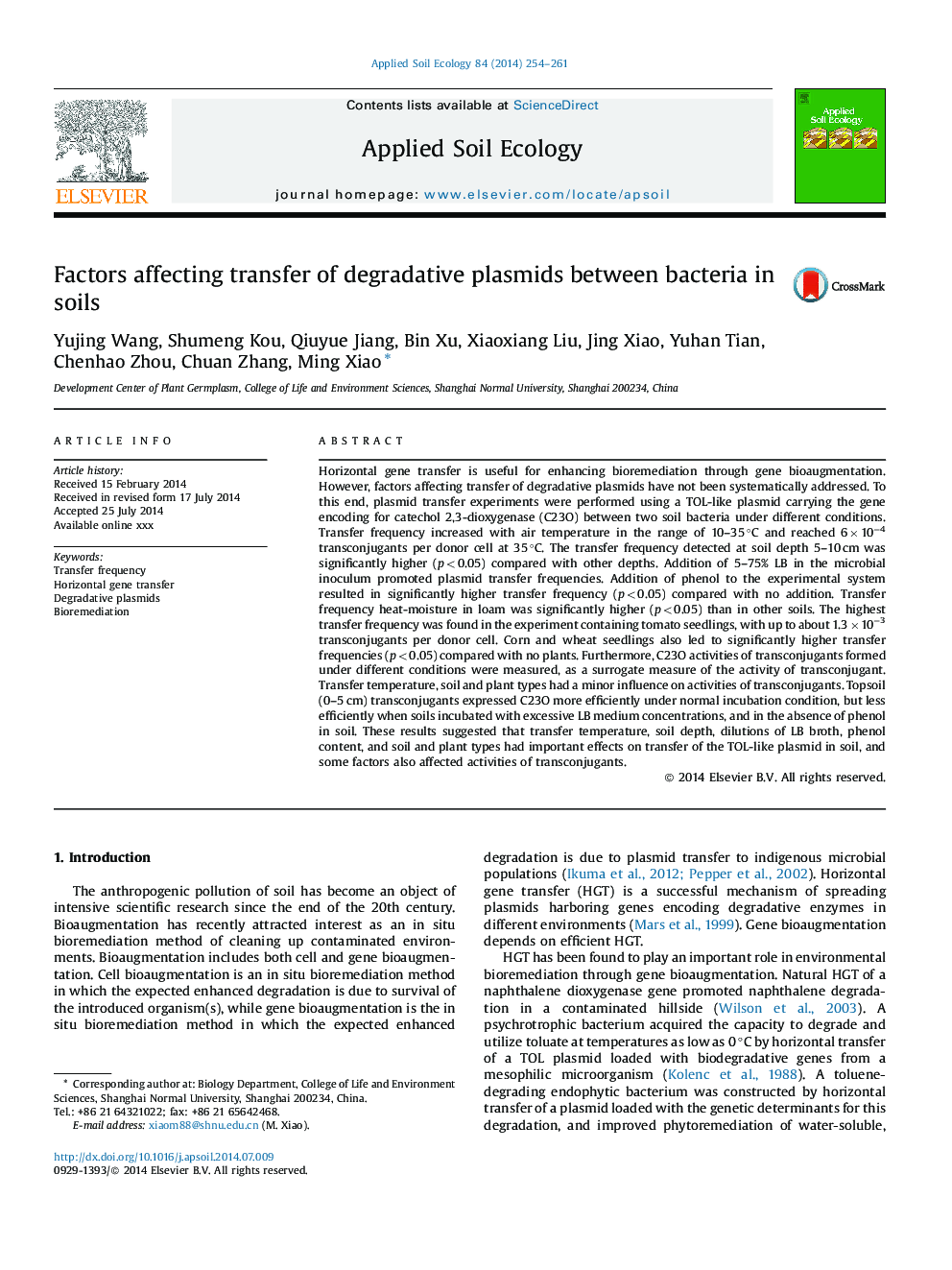| Article ID | Journal | Published Year | Pages | File Type |
|---|---|---|---|---|
| 4382189 | Applied Soil Ecology | 2014 | 8 Pages |
•We studied systematically factors affecting transfer of degradative plasmid in soil.•Transfer frequency in loam soil was the highest among different soil types.•Tomato, corn and wheat led to significantly higher transfer frequency than no plants.•Temperature, soil depth, concentrations of media and phenol affect plasmid transfer.•Some factors also affected activity of transferred plasmids in transconjugants.
Horizontal gene transfer is useful for enhancing bioremediation through gene bioaugmentation. However, factors affecting transfer of degradative plasmids have not been systematically addressed. To this end, plasmid transfer experiments were performed using a TOL-like plasmid carrying the gene encoding for catechol 2,3-dioxygenase (C23O) between two soil bacteria under different conditions. Transfer frequency increased with air temperature in the range of 10–35 °C and reached 6 × 10−4 transconjugants per donor cell at 35 °C. The transfer frequency detected at soil depth 5–10 cm was significantly higher (p < 0.05) compared with other depths. Addition of 5–75% LB in the microbial inoculum promoted plasmid transfer frequencies. Addition of phenol to the experimental system resulted in significantly higher transfer frequency (p < 0.05) compared with no addition. Transfer frequency heat-moisture in loam was significantly higher (p < 0.05) than in other soils. The highest transfer frequency was found in the experiment containing tomato seedlings, with up to about 1.3 × 10−3 transconjugants per donor cell. Corn and wheat seedlings also led to significantly higher transfer frequencies (p < 0.05) compared with no plants. Furthermore, C23O activities of transconjugants formed under different conditions were measured, as a surrogate measure of the activity of transconjugant. Transfer temperature, soil and plant types had a minor influence on activities of transconjugants. Topsoil (0–5 cm) transconjugants expressed C23O more efficiently under normal incubation condition, but less efficiently when soils incubated with excessive LB medium concentrations, and in the absence of phenol in soil. These results suggested that transfer temperature, soil depth, dilutions of LB broth, phenol content, and soil and plant types had important effects on transfer of the TOL-like plasmid in soil, and some factors also affected activities of transconjugants.
